Bunker Constructor – Review
by Mark R
|
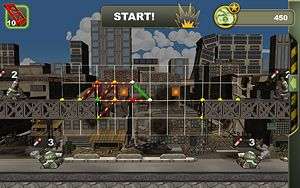 There’s a lot to be said for simplicity in game design. Way back before anyone had ever heard of PhysX or dynamic lighting there was a little game by the name of PONG which, miraculously, consisted of nothing more than three blocks – one square, and two rectangular. Perhaps it was because it was a brand-new technology, or maybe it really was just a well-thought-out approach to entertainment, but it became the biggest thing since someone toasted sliced bread. Before long, practically every forward-thinking household had one of Atari’s PONG consoles or, at the very least, a cheap knock-off from Binatone or similar.
There’s a lot to be said for simplicity in game design. Way back before anyone had ever heard of PhysX or dynamic lighting there was a little game by the name of PONG which, miraculously, consisted of nothing more than three blocks – one square, and two rectangular. Perhaps it was because it was a brand-new technology, or maybe it really was just a well-thought-out approach to entertainment, but it became the biggest thing since someone toasted sliced bread. Before long, practically every forward-thinking household had one of Atari’s PONG consoles or, at the very least, a cheap knock-off from Binatone or similar.
In recent years, this simplicity has found its way back into gaming and, as such, resulted in what some would call a modern classic – Angry Birds. The premise, if you’re not already aware, is ridiculously simple – kill the little pigs who have holed themselves up in various cobbled-together structures by calculating the potential trajectory and velocity of catapulted birds. Birds who are, as the title suggests, irked. Headup Games clearly saw this spark of brilliance and found an alternative route to exploit its simple, yet inspired, mechanics with Bunker Constructor.
Where Angry Birds is all about destroying pre-built structures to take out the aforementioned pigs, Bunker Constructor turns this premise on its head. Your role is to survey the environment and the various destructive devices that have been placed around your explosive crates, then use whichever components are at your disposal to protect these crates at all costs. Initially, you’re provided with only the most basic of defensive elements – an iron-built block which you place in a grid formation (horizontal, vertical, or angled left/right) and these must be anchored and supported as you also have to contend with physics.
 Each of the AI’s tools have a set number of attacks on display, and it’s up to you to provide enough protection to survive these. For example, a right-facing cannon with a total of three attack points will easily break through an iron wall in one hit, and you’ll only have a certain amount of in-game currency to spend on materials so you must choose wisely when preparing your structure. One you click ‘Start’ to begin the battle, everything will play out and you can either click ‘Stop’ before the end to make changes, or follow through to the end and replay with everything in situ if you fail. This allows you to calculate the best strategy, based on where each attack is focused.
Each of the AI’s tools have a set number of attacks on display, and it’s up to you to provide enough protection to survive these. For example, a right-facing cannon with a total of three attack points will easily break through an iron wall in one hit, and you’ll only have a certain amount of in-game currency to spend on materials so you must choose wisely when preparing your structure. One you click ‘Start’ to begin the battle, everything will play out and you can either click ‘Stop’ before the end to make changes, or follow through to the end and replay with everything in situ if you fail. This allows you to calculate the best strategy, based on where each attack is focused.
With physics in play, the outcome of each attempt may actually vary even if you make no changes to your defences, so if you focus your energies on one particular crate and get it fully protected through trial and error before switching attention to another crate, you may find that sometimes that first crate is still destroyed. Although this may at first appear unrealistic, it’s the opposite – the more defensive structures are being destroyed, the more natural vibration there’d be, which makes it more likely that previously strong areas may be taken down. It makes for far more interesting gameplay when you have to suddenly rethink everything that you thought was going to work in your favour.
As you progress through the levels, more defensive structures are introduced. At first you’ll be given the concrete wall, and finally the armoured wall. As you’d expect, the concrete wall has considerably more protective qualities than the iron crossbar wall, but it also means that you’ll need more support for each one you erect as they are heavier. The same can be said for the armoured walls which, unsurprisingly, can withstand some heavy artillery attacks but need much more support than the other structures. With each stronger component requiring more cash to place, it becomes a balancing act between available funds and what you deem necessary to survive.
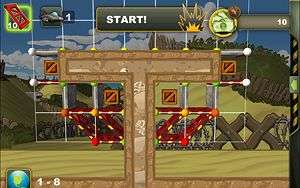 To further compound the issue, the more cash you have left over, the greater the reward will be. When you begin each construction, the counter at the top of the screen will show available cash as well as a gold medal. As you place structures, the available cash will deplete and once you reach a certain point, the medal will change to silver. Carry on placing structures and you’ll eventually be shown a bronze medal. You can still complete the levels with bronze medals, but it obviously means that it’s also possible to cut down on what you’re using in order to achieve gold status. That is where the addictive qualities of Bunker Constructor kick in.
To further compound the issue, the more cash you have left over, the greater the reward will be. When you begin each construction, the counter at the top of the screen will show available cash as well as a gold medal. As you place structures, the available cash will deplete and once you reach a certain point, the medal will change to silver. Carry on placing structures and you’ll eventually be shown a bronze medal. You can still complete the levels with bronze medals, but it obviously means that it’s also possible to cut down on what you’re using in order to achieve gold status. That is where the addictive qualities of Bunker Constructor kick in.
As soon as you place that one structure which pushes you from gold status to silver you immediately know that you’ve gone wrong somewhere. Sure, you’ll probably still survive the attack and move on to the next level, but you could also re-evaluate your strategy by switching pieces around or substituting armoured for concrete, or concrete for iron, in order to leave enough cash to warrant that gold medal. It isn’t easy, it’s fair to say, but I was bitten by the bug in later levels and became determined to rethink everything to the point where my bronze medal eventually moved to silver after much moving around and many substitutions. I only once managed to pull a gold back from a bronze though, it has to be said.
The more you progress, the tougher it gets. Sometimes you’ll be restricted to only one or two of the structure types, and other times your cash will be limited. To add to this, you may also find yourself in a level where there are four fly-over attacks, which means you’re not only having to contend with protecting your crates from the side but also layers of armoured ceilings. Then we have the levels where the crates start in one area and must end up in a green-highlighted area or you’ll fail, even if the crates survive. In one particular level, there is only one crate but it begins suspended in mid air many stories up. You have to get it safely to the bottom, and across to the left. Allow it to drop too far, however, and it’ll explode. You therefore have to consider ways to prevent it from falling more than a few pixels, guide it to the ground, and over to the other side of the area… all while being attacked by bomb-dropping planes flying overhead.
As someone blown away by the modern simplicity of Angry Birds, albeit coming to the party years after many had already left, Headup Games’ Bunker Constructor has done for this genre what Dungeon Keeper did for strategies when it made you the bad guy. This time around, you’re the good guy trying to protect your precious cargo from the enemy, and even though the subversion is so utterly simple, it works beautifully. It’s entirely possible to blitz through each level and accept the bronze medals – which will likely still take several failed attempts before survival is possible – but when you see that it’s possible to survive with much fewer, and cheaper, structures… it’s easy to be pulled back in for ‘one more try’.
Pros- It's Angry Birds, subverted
- Very small margin for error if you want gold status
- Simple enough to (eventually) blitz through if bronze is good enough for you
- Total of 45 levels, each of which could easily take ten minutes to nail that perfect score
- No IAPs and a very low price tag of only £1.49
For those who appreciate a bit of a head-scratcher from time to time, Bunker Constructor is up there with the best of them. It's akin to Portal in terms of using what you have before you to get yourself out of a scrape and carry on to the next area, but on a considerably more basic level. The required complexity ramps up as you progress, but never to the point where you absolutely can't proceed. The trial-and-error nature of it also means that there's every possibility that the 45 levels on offer could take you a good five or six hours to get through, depending on how much you wanted those elusive gold medals.
Last five articles by Mark R
- From Acorns to Fish
- Alone In The Dark
- Why Borderlands is Better Than Borderlands 2
- Falling Short
- The Division: A Guide to Surviving the Dark Zone Solo


















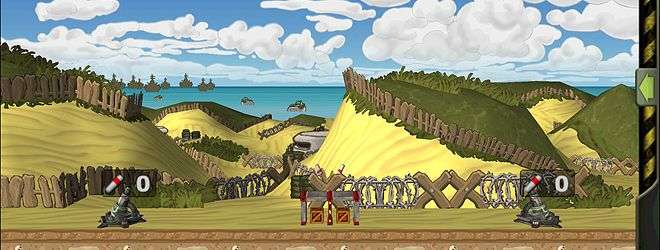
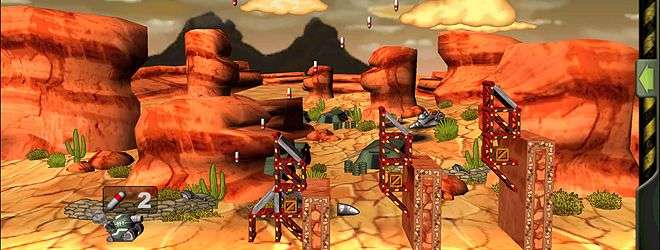
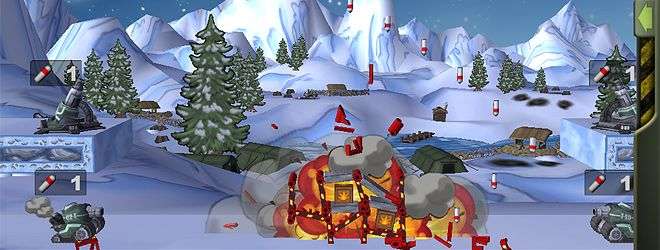






There are no comments, yet.
Why don’t you be the first? Come on, you know you want to!